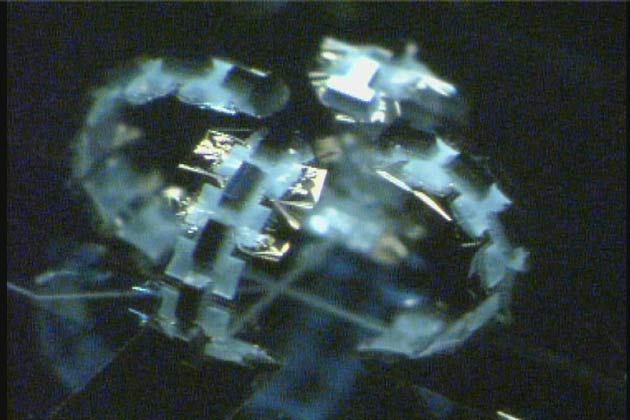Microscopic Robot Lends Helping Hand

A microscopic robot hand, made of silicon and plastic balloons, could help perform surgery and defuse bombs.
The "microhand" is so tiny that when clenched into a fist it measures a little over one millimeter across, or roughly as thick as a dime [image]. It is made using silicon finger bones and balloons for joints that inflate and deflate to flex the fingers.
The robot hand was designed by microelectromechanical systems scientist Yen-Wen Lu at Rutgers University in Piscataway, N.J., and mechanical engineer Chang-Jin Kim at UCLA. The prototype has four fingers arranged into a cross, each digit roughly a half-millimeter long, made via conventional semiconductor manufacturing techniques normally used to assemble electronics.
The microhand is gentle but strong enough to pluck a single delicate fish egg from a sticky egg mass [video].
"You could imagine this being used for microsurgery— at the end of a catheter, for instance. We found we could grab a nerve bundle with it," Kim told LiveScience. "We are also working with a company who said this could help disarm explosives. Right now the robotic manipulators used there are pretty crude, and a gentle and dexterous hand would be helpful."
Lu and Kim reported their findings online Oct. 16 via the journal Applied Physics Letters.
- Images: Cutting-Edge Robots
- Real Robots: VOTE for Your Favorite
- Asimov's First Law: Japan Sets Rules for Robots
- The World’s Smallest Robot
- All About Robots
Get the world’s most fascinating discoveries delivered straight to your inbox.



